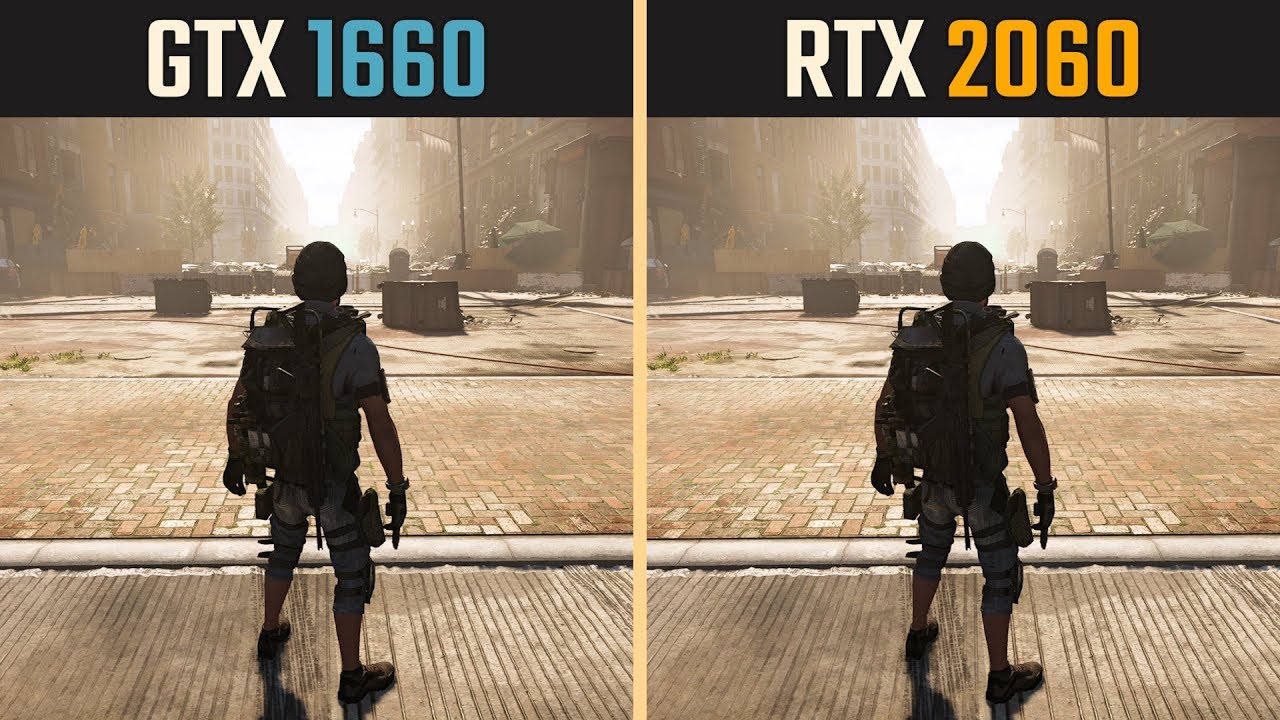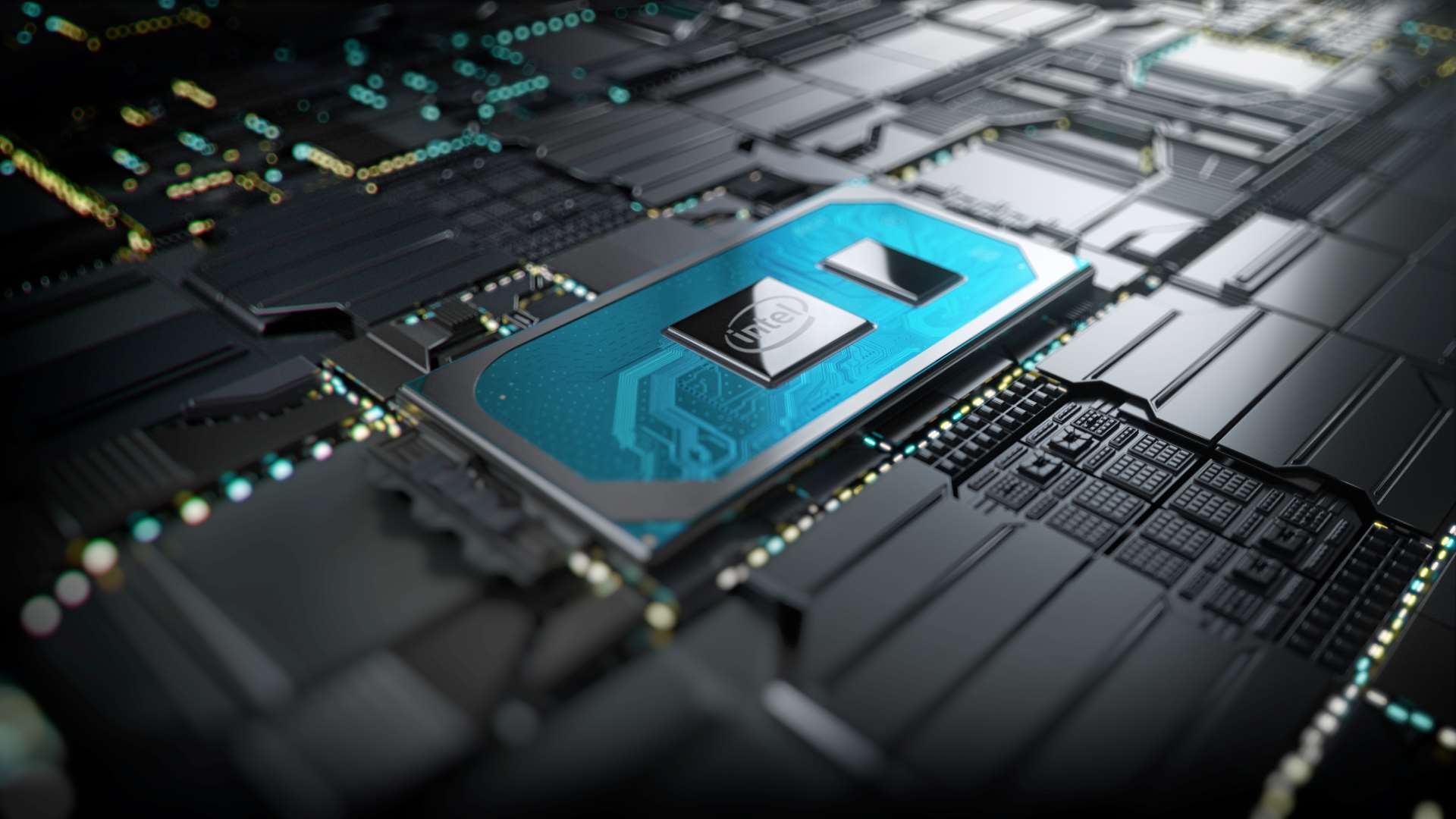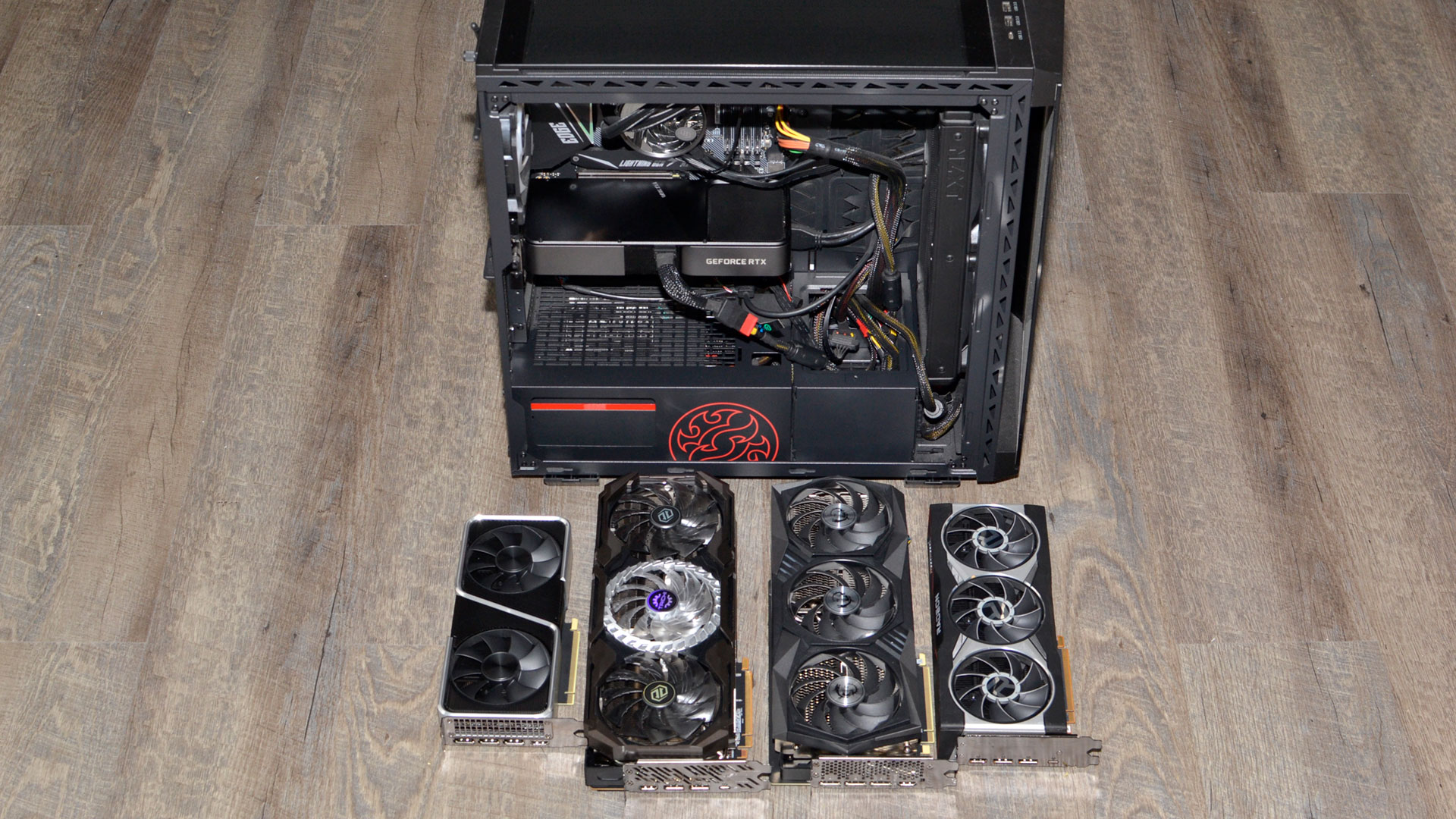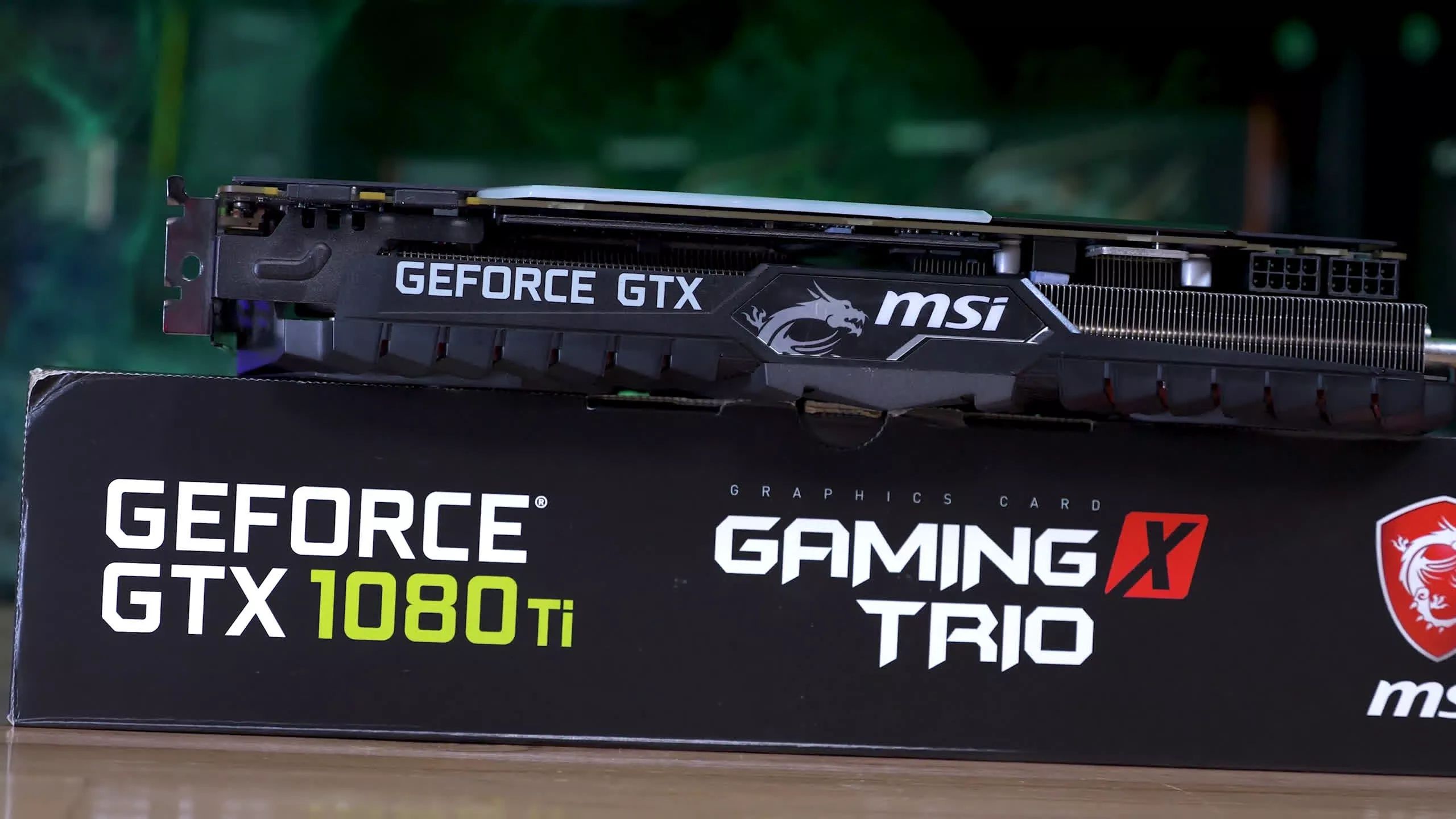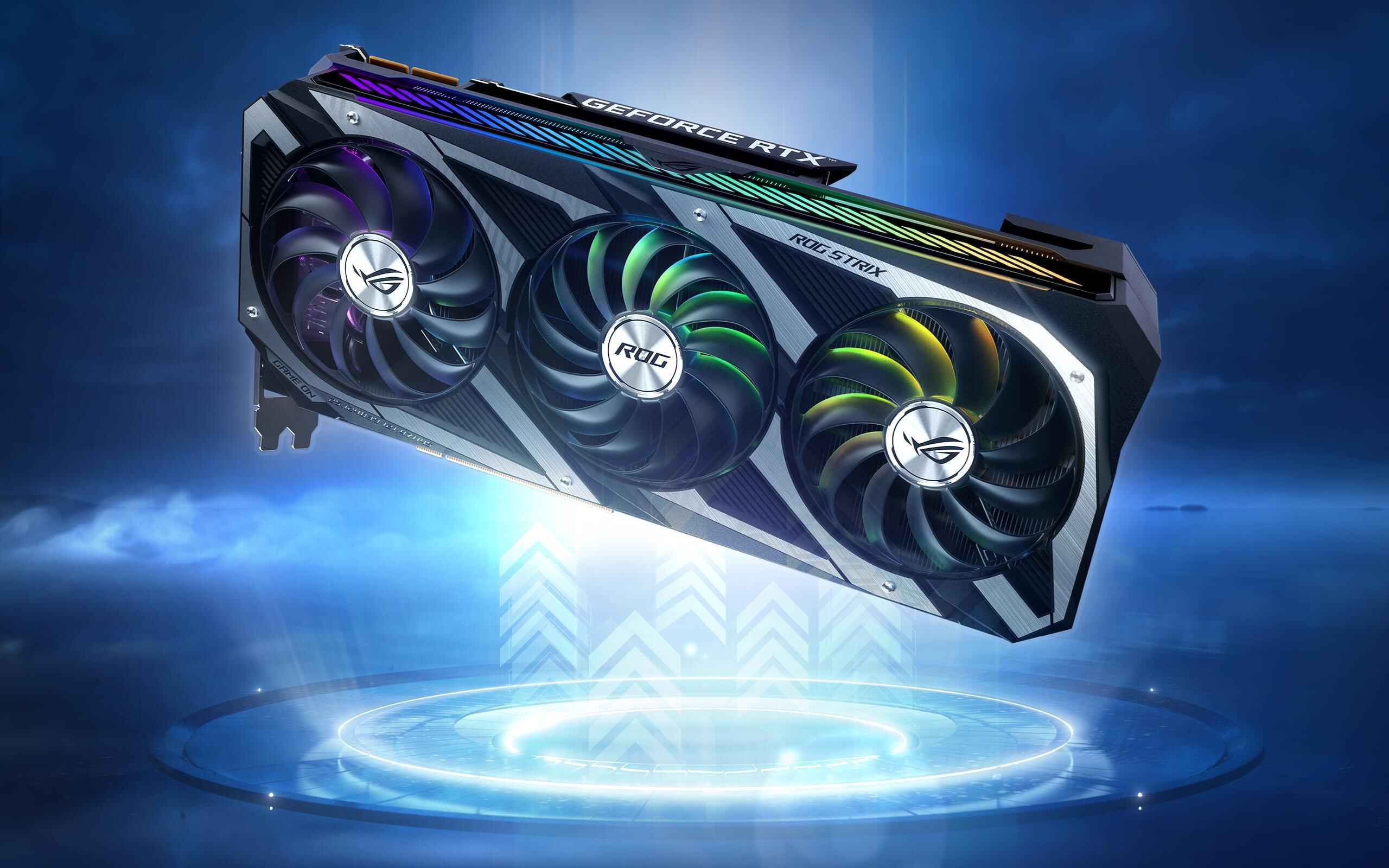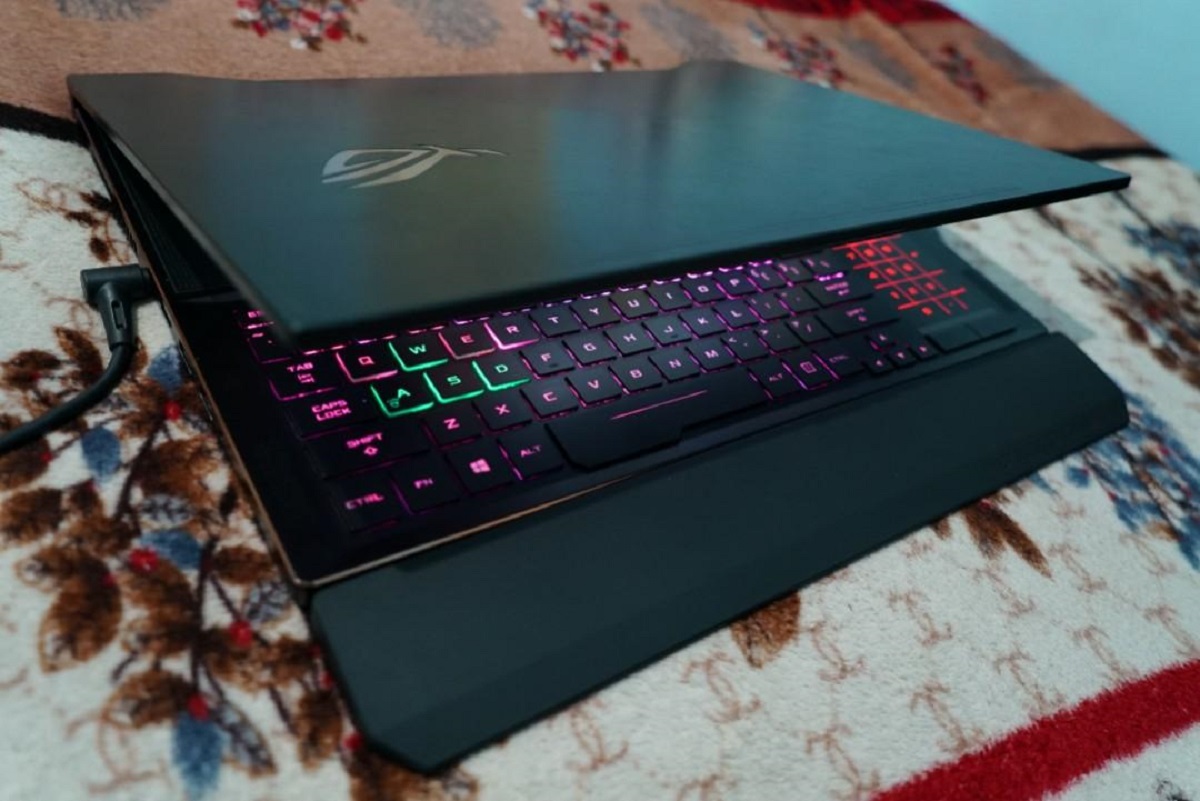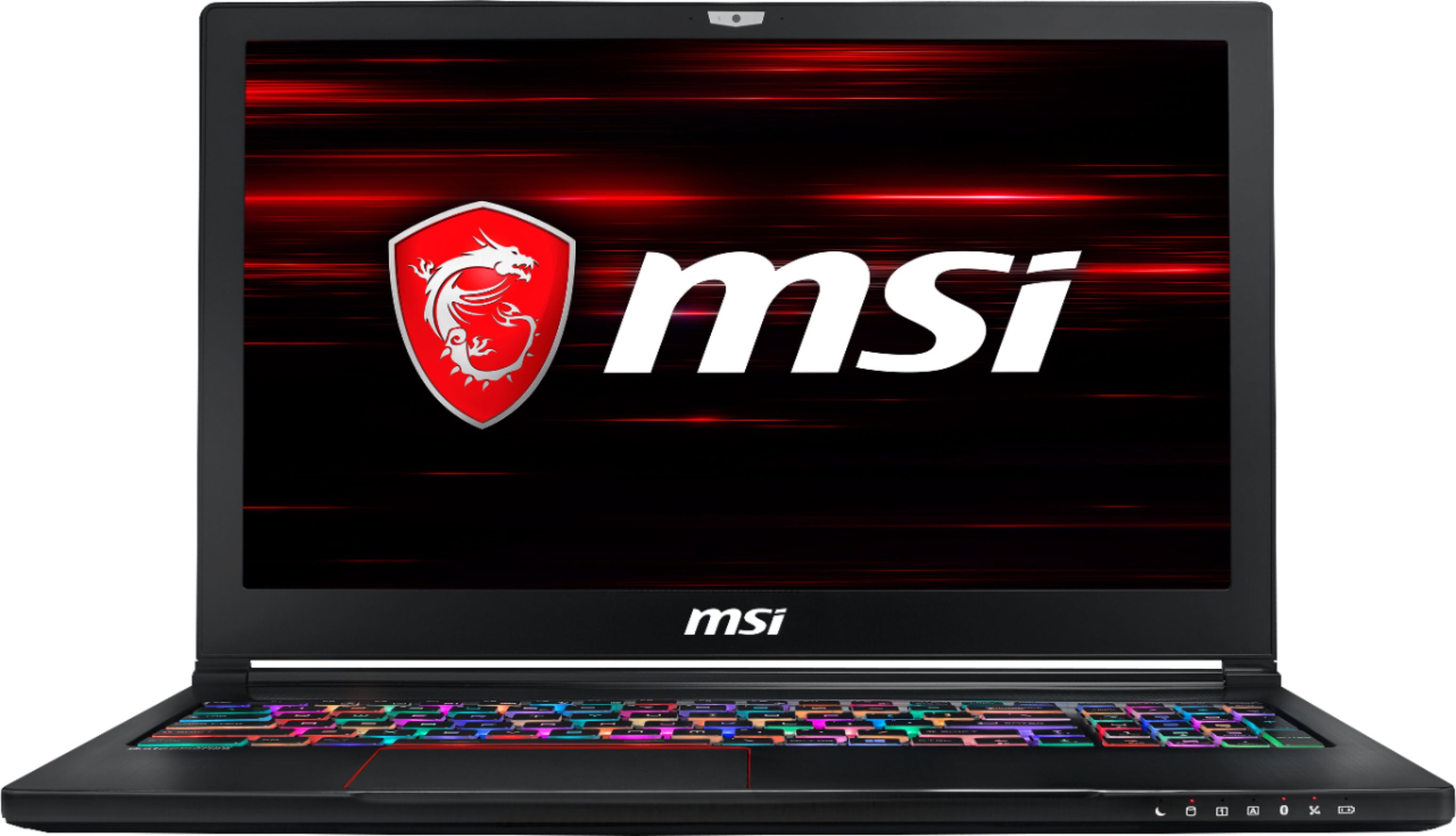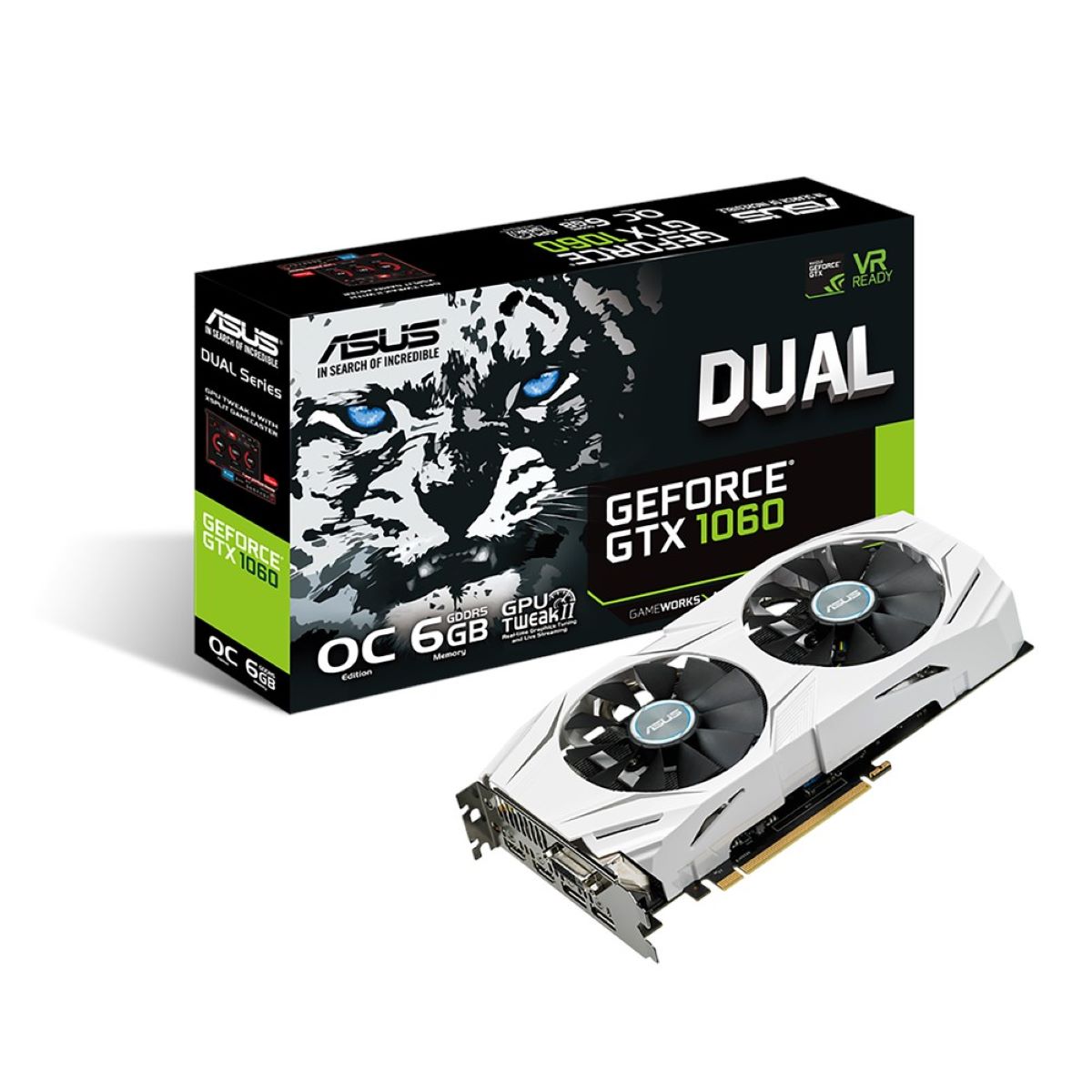Introduction
The battle between GTX and RTX graphics cards has been a hot topic among gamers and tech enthusiasts. When it comes to choosing the right graphics card for your gaming rig or workstation, understanding the differences between these two series can make a significant impact on your overall experience.
Graphics cards are crucial components of any computer system, responsible for rendering images, videos, and 3D animations. They play a vital role in providing smooth and immersive visuals, especially for gaming and graphic-intensive tasks.
The GTX series, produced by NVIDIA, has long established itself as a reliable and powerful line of graphics cards. On the other hand, the RTX series introduced the revolutionary real-time ray tracing technology, enhancing visual realism and immersion like never before.
In this article, we will dive into a detailed comparison between GTX and RTX graphics cards. We will explore the differences in performance, ray tracing capabilities, price points, and the overall gaming experience. By the end, you will have a clearer understanding of which series is better suited to your specific needs and preferences.
Whether you’re a hardcore gamer, a professional content creator, or simply someone looking to build a high-performing computer, this guide will assist you in making an informed decision. So, let’s delve deeper into the world of GTX and RTX graphics cards and find out which one emerges victorious in this head-to-head battle!
What is a Graphics Card?
Before we explore the differences between GTX and RTX graphics cards, let’s first understand what a graphics card actually is and why it is such a critical component in computer systems.
A graphics card, also known as a video card or GPU (Graphics Processing Unit), is a hardware device that is responsible for generating and displaying images, videos, and animations on your computer screen. It works in conjunction with the CPU (Central Processing Unit) to process and render complex visual data.
The main purpose of a graphics card is to relieve the burden on the CPU by handling the intensive graphical calculations required for gaming, video editing, and other graphic-intensive tasks. It consists of a specialized processor, memory, and various other components that work together to efficiently process and render images.
The graphics card connects to your computer’s motherboard via a PCI Express slot and is usually equipped with one or more display connectors (such as HDMI, DisplayPort, or DVI) to connect to your monitor.
The performance of a graphics card is determined by factors such as the GPU’s clock speed, the number of cores, the amount of video memory (VRAM), and the memory bandwidth. These specifications play a crucial role in determining the card’s ability to handle high-resolution graphics, render complex 3D scenes, and support advanced visual effects.
In summary, a graphics card is a specialized hardware component that accelerates the rendering of visual data, providing smooth and high-quality graphics for gaming, video editing, and other demanding tasks. Now that we have a better understanding of the role of a graphics card, let’s delve into the differences between the GTX and RTX series.
GTX Graphics Cards
The GTX series of graphics cards, produced by NVIDIA, has long been hailed as a powerhouse in the gaming community. These cards are renowned for their exceptional performance, reliability, and affordability.
The GTX series offers a wide range of options for gamers, from entry-level cards suitable for casual gaming to high-end models that can handle the most demanding games and applications. They are equipped with a dedicated GPU that features a significant number of CUDA cores, which are responsible for processing the graphical calculations.
One of the standout features of GTX graphics cards is their ability to deliver impressive frame rates and smooth gameplay. They excel in traditional gaming scenarios, providing excellent performance when paired with high-resolution monitors and fast refresh rates. Gamers can enjoy immersive gaming experiences with high visual fidelity and fluid gameplay.
In terms of price, GTX graphics cards are generally more budget-friendly compared to their RTX counterparts. This makes them an attractive option for gamers who want to build a capable gaming rig without breaking the bank. The availability of various models at different price points provides flexibility for users with different budget constraints.
Another advantage of GTX graphics cards is their widespread compatibility with existing games and software. The majority of games on the market are optimized for GTX architecture, ensuring better performance and stability. This makes it easier for gamers to find compatible and optimized drivers, ensuring a hassle-free gaming experience.
However, one drawback of GTX graphics cards is their lack of support for real-time ray tracing technology. While they can still deliver stunning visuals in traditional rendering methods, the absence of ray tracing capabilities means missing out on the enhanced realism and lighting effects offered by the RTX series.
Overall, GTX graphics cards remain a popular choice for gamers who prioritize performance and affordability. With their impressive capabilities and wide range of options, gamers can find a GTX card that meets their specific requirements and gaming needs.
RTX Graphics Cards
The RTX series of graphics cards, introduced by NVIDIA, has revolutionized the gaming industry with its groundbreaking real-time ray tracing technology. These cards are specifically designed to deliver unparalleled visual realism and immersion, pushing the boundaries of what is possible in gaming graphics.
The standout feature of RTX graphics cards is their ability to implement real-time ray tracing, which simulates the behavior of light in a scene, resulting in highly lifelike reflections, shadows, and global illumination. This technology brings a new level of visual fidelity and realism to games, creating stunning and immersive environments.
In addition to ray tracing, RTX graphics cards are equipped with powerful GPUs that offer a significant number of CUDA cores, allowing for exceptional performance in both gaming and professional applications. This makes RTX cards a great choice for content creators who work with 3D modeling, rendering, and video editing software.
Another notable feature of RTX graphics cards is the integration of AI (Artificial Intelligence) technology through NVIDIA’s DLSS (Deep Learning Super Sampling). DLSS uses machine learning algorithms to upscale lower-resolution images in real-time, delivering improved image quality while maintaining high performance.
While the RTX series excels in visual fidelity and performance, they do come at a higher price point compared to GTX graphics cards. The advanced technology and capabilities of RTX cards contribute to their premium pricing, making them more suited for gamers and professionals who prioritize cutting-edge visuals and performance.
It is important to note that the adoption of real-time ray tracing is still in its early stages, and many games are still being optimized for this technology. While the number of ray-traced games is growing, not all games fully utilize this feature yet. However, with NVIDIA’s continued commitment to pushing ray tracing technology, we can expect more games to support this feature in the future.
In summary, the RTX series of graphics cards offers an unprecedented level of visual realism and performance. With real-time ray tracing, AI integration, and powerful GPUs, RTX cards are the go-to choice for gamers and professionals who crave top-of-the-line graphics and maximum immersion.
Performance Comparison
When it comes to graphics cards, performance is a crucial factor to consider. Both GTX and RTX series offer impressive performance, but there are notable differences between the two.
GTX graphics cards, with their focus on raw power and efficiency, deliver exceptional performance in traditional rendering methods. They excel in delivering high frame rates and smooth gameplay in a wide range of games and applications. Whether you’re playing the latest AAA titles or running resource-intensive software, GTX cards can handle the task with ease.
On the other hand, RTX graphics cards take performance to the next level by introducing real-time ray tracing. While ray tracing enhances visual fidelity and realism, it also puts a higher workload on the GPU. As a result, RTX cards may experience a slight performance drop compared to GTX cards when running games or applications with ray tracing enabled.
However, NVIDIA’s DLSS (Deep Learning Super Sampling) technology improves the performance of RTX cards by utilizing AI algorithms to upscale lower-resolution images. This allows for smoother gameplay and higher frame rates in games that support DLSS, effectively mitigating the impact of ray tracing on performance.
It is important to note that the performance difference between GTX and RTX varies depending on the specific models and their specifications. Higher-end RTX cards tend to have better performance compared to their GTX counterparts, thanks to their advanced architecture and increased number of CUDA cores.
When selecting a graphics card based on performance, it’s important to consider your specific needs and use cases. If you prioritize raw power and high frame rates, a GTX card might be the better choice. However, if you value cutting-edge visuals and are willing to sacrifice a small performance drop for the enhanced realism of ray tracing, an RTX card is the way to go.
Ultimately, the choice between GTX and RTX cards in terms of performance comes down to personal preference and the trade-off you’re willing to make between raw power and advanced visual technologies.
Ray Tracing Capabilities
Ray tracing is a game-changing technology that has revolutionized the way we experience graphics in games and other visual applications. RTX graphics cards, with their dedicated hardware for real-time ray tracing, offer unparalleled capabilities in this area.
Ray tracing simulates the behavior of light in a scene, allowing for highly realistic reflections, refractions, and shadows. This technology brings a new level of visual fidelity and immersion to games, making virtual worlds look and feel more lifelike than ever before.
RTX graphics cards are specifically designed to deliver real-time ray tracing, enabling developers to create stunning visual effects and intricate lighting scenarios. With ray tracing, gamers can experience highly realistic reflections on reflective surfaces, realistic shadows that accurately mimic light sources, and enhanced global illumination that adds depth and realism to the scenes.
One of the significant advantages of RTX cards’ ray tracing capabilities is their ability to improve the overall visual quality without compromising performance. Thanks to NVIDIA’s DLSS (Deep Learning Super Sampling) technology, RTX cards can upscale lower-resolution images using AI algorithms, resulting in improved image quality while maintaining high frame rates.
While ray tracing adds a new level of visual realism, it is important to understand that not all games and applications fully utilize this technology. The adoption of ray tracing is still growing, and it may take some time before we see widespread implementation across all games. However, developers are increasingly integrating ray tracing into their titles, showcasing its potential for delivering immersive and realistic visuals.
In summary, RTX graphics cards’ ray tracing capabilities redefine what is possible in gaming graphics. The ability to simulate the behavior of light in real-time brings a new level of visual immersion and realism, making games look more stunning and captivating. With DLSS technology, RTX cards can maintain high performance while delivering enhanced visual fidelity, ensuring a smooth and visually pleasing gaming experience.
Price Comparison
When considering a graphics card, price is a significant factor for many users. GTX and RTX graphics cards vary in price due to their differing technologies and capabilities.
Generally, GTX graphics cards are more budget-friendly compared to their RTX counterparts. They offer a wide range of models at various price points, making them accessible to gamers with different budget constraints. This affordability makes GTX cards an attractive option for users who want solid performance without splurging on the latest and most advanced technology.
On the other hand, RTX graphics cards come at a higher price due to their innovative features and advanced technologies. The inclusion of real-time ray tracing and DLSS capabilities increases the manufacturing costs, resulting in a premium price tag. RTX cards are better suited for users who prioritize cutting-edge visuals, are early adopters of technology, and are willing to invest in the latest advancements in gaming graphics.
It is important to consider your specific needs and requirements when determining which series is the best fit for your budget. If you’re primarily interested in gaming performance and have a limited budget, a GTX graphics card can offer excellent value for your money. You can still enjoy smooth gameplay and high frame rates without breaking the bank.
For users who demand top-of-the-line graphics and the latest visual technologies, an RTX graphics card is worth the investment. The higher price is offset by the enhanced realism, improved image quality, and advanced features that come with real-time ray tracing and DLSS.
When comparing prices between GTX and RTX cards, it’s essential to balance your budget with the features and capabilities that you prioritize. Consider the specific models and their price-to-performance ratio to ensure that you are getting the most bang for your buck.
In summary, GTX graphics cards offer a more budget-friendly option, providing solid performance for gamers on a limited budget. RTX graphics cards, on the other hand, come at a premium price but deliver advanced features like real-time ray tracing and DLSS for users who crave cutting-edge visuals. Ultimately, the price comparison between GTX and RTX cards depends on your specific needs, budget, and priorities in a graphics card.
Gaming Experience
The gaming experience is at the core of what makes a graphics card valuable to gamers. Both GTX and RTX graphics cards offer immersive experiences, but there are notable differences that can impact your gameplay.
GTX graphics cards are known for their exceptional performance in traditional rendering methods. They excel at delivering high frame rates and smooth gameplay, making them a popular choice among gamers. Whether you’re playing fast-paced action games or exploring vast open-world environments, GTX cards can provide a seamless gaming experience with crisp visuals and responsive gameplay.
RTX graphics cards take the gaming experience to a whole new level with their real-time ray tracing capabilities. Games that support ray tracing can deliver highly realistic visuals with accurate reflections, shadows, and lighting effects. This adds a level of immersion and realism that can enhance your enjoyment of the game and draw you further into the virtual world.
While real-time ray tracing is an impressive feature, it’s important to note that not all games fully utilize this technology yet. Only a select number of titles have embraced ray tracing, and the implementation may vary in terms of quality and performance impact. However, as more developers incorporate ray tracing into their games, the gaming experience will continue to evolve and become more immersive.
Another factor that can impact the gaming experience is the availability and optimization of drivers and software for a particular graphics card. GTX graphics cards have been around for a longer time, and as a result, there is a vast library of optimized drivers and software available. This ensures smoother compatibility and improved game performance.
RTX graphics cards, being newer and featuring advanced technologies, may require more frequent driver updates and optimizations. While NVIDIA is actively developing drivers and working with developers to improve compatibility, it’s worth considering that early iterations of software may have some initial hiccups and compatibility issues.
In summary, both GTX and RTX graphics cards provide immersive gaming experiences, but with different strengths. GTX cards offer exceptional performance in traditional rendering methods, delivering smooth gameplay and high frame rates. RTX cards, on the other hand, introduce ray tracing capabilities, offering stunning visuals and enhanced realism in games that support this feature. The gaming experience is enhanced by the availability and optimization of drivers, which is more established for GTX cards due to their longer presence in the market. Ultimately, the choice between GTX and RTX cards for the gaming experience depends on your specific requirements and the level of visual immersion you desire.
Conclusion
Choosing between GTX and RTX graphics cards ultimately comes down to your specific needs, preferences, and budget. Both series offer impressive performance and deliver outstanding gaming experiences, but with notable differences.
GTX graphics cards are reliable, affordable, and excel in delivering high frame rates and smooth gameplay. They are ideal for gamers on a budget or those who prioritize raw power and performance over advanced visual technologies like ray tracing.
On the other hand, RTX graphics cards introduce revolutionary real-time ray tracing capabilities, making games look more realistic and immersive. They come at a higher price point but offer cutting-edge features and advanced visual effects that can take gaming to the next level.
Price is an important factor to consider, as GTX cards generally provide more budget-friendly options, while RTX cards are more expensive due to their advanced technologies and features. Ultimately, your budget and willingness to invest in the latest advancements in gaming graphics will play a significant role in your decision.
It’s worth noting that the availability and optimization of games that fully utilize ray tracing technology are still growing. While more titles are embracing this feature, it may take some time before it becomes widespread.
In conclusion, if you’re looking for strong performance on a budget, GTX graphics cards are a solid choice. They offer reliable performance in traditional rendering methods and have a wide range of models available at different price points.
If you want to experience the cutting-edge of visual technology and are willing to invest in the latest advancements, RTX graphics cards deliver stunning visuals with real-time ray tracing. However, this comes at a premium price, and you should also consider the availability and optimization of games that support ray tracing.
Ultimately, the decision between GTX and RTX graphics cards depends on your specific needs, budget, and the level of visual immersion you desire in your gaming experience. Consider your preferences, research the specific models, and choose the graphics card that best suits your requirements.







